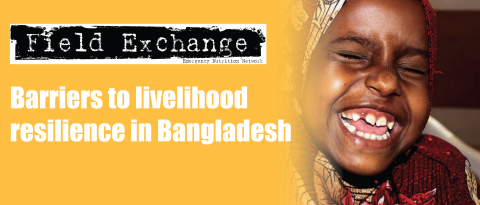Famine in Somalia and the failure of data driven humanitarianism

Children under 5 years accounted for over half of the deaths
Summary of blog1
A recently published blog discusses the limitations of data-driven humanitarian efforts and the lessons learned from the 2011 Somalia famine.
In May 2012, the UN Secretary General published a report on ‘Strengthening of the coordination of emergency humanitarian assistance of the United Nations.’ The report identified the need to "…build systems to support data-driven humanitarian decision making,, noting that "…the current humanitarian system often struggles to furnish timely and consistently reliable information and analysis in order to provide an appropriate response." Perhaps there was a certain irony that the UN report was published just three months after the end of the famine in Southern Somalia. One year on from its officially declared end, we reflect on what has been learnt from the various evaluations of the response to the famine, and what that says about the limits to data-driven humanitarian decision making.
The 2011 famine in Somalia was the most recent to afflict humankind and one of the best documented. It affected extensive parts of Southern Somalia and is thought to have cost the lives of tens of thousands of people, while hundreds of thousands more fled across the border into Kenya and Ethiopia.
Did, in fact, the famine occur because data from this conflict-affected country were just not available and the famine was impossible to predict? Would more data have driven a better decision making process that could have averted disaster? Unfortunately, this does not appear to be the case. There had, in fact, been eleven months of escalating warnings emanating from the famine early warning systems that monitor Somalia. Somalia was, at the time, one of the most frequently surveyed countries in the world, with detailed data available on malnutrition prevalence, mortality rates, and many other indicators. The evolution of the famine was reported in almost real time, yet there was no adequate scaling up of humanitarian intervention until too late.
So, if a lack of data and forecasting was not the problem, what did allow this health catastrophe to happen? Unsurprisingly, there is no single answer, with a number of different factors contributing to the aetiology of the famine and the lack of timely and effective humanitarian action. These factors included the political and military actions of authorities within Somalia, in neighbouring countries, and other states; the decision of key international donors not to fund the necessary interventions; and failure of the humanitarian system itself to respond in a sufficiently independent way. The geopolitical agendas of multiple actors were not aligned with the need to prevent famine. For example, the legislation enacted by the US under the PATRIOT Act and the actions of the Office of Foreign Assets Control introduced widespread concern within the humanitarian community that organisations or individuals could be prosecuted under US law for undertaking humanitarian work in areas administered by al Shabaab, named as a Foreign Terrorist Organisation by the US State Department but the effective administrative authority in large areas of Southern Somalia at the time. Fear of litigation by governments reduced the speed and extent of responses that could have prevented the development of famine.

Somali refugees in Buramino camp, Dolo Ado, Ethiopia (2012)
The deeply antagonistic relations between al Shabaab and Western donors, such as the US, resulted in a highly politicised operating environment for humanitarian agencies that relied on donors for their funding, and al Shabaab for their access to affected populations. In circumstances such as these, the strict neutrality and impartiality of agencies is crucial to their ability to operate effectively and safely. In Somalia, the UN was neither neutral nor impartial - it had a political mandate to support the Somalia Transitional Federal Government with which al Shabaab was at war. As a result, the UN-led cluster system of humanitarian agencies was viewed with deep suspicion by al Shaabab. It banned many agencies from operating in Southern Somalia; a decision which ultimately proved to have catastrophic consequences. The UN-led cluster approach offers important advantages in situations where the political agendas of donors and national authorities are aligned. However, in complex emergencies such as Somalia, characterised by conflict and multiple and opposing political agendas, there is a fundamental mismatch between the design of the cluster system - which emphasizes partnership with national government - and the need of humanitarian agencies to achieve both actual and perceived neutrality.
Returning to the report of the Secretary General, data should, of course, drive humanitarian decision making, and the system needs to constantly evolve and improve to meet new challenges and utilise new opportunities provided by remote sensing, crowd sourcing, mobile technologies, and whatever comes next. But when push comes to shove, politics trump data. Had the humanitarian system been better insulated from political agendas in 2011, famine in Somalia could have been avoided. Politics was the driving force that led to both the development of the famine and the response failure. Reform continues to be urgently needed as complex emergencies, with their complex geopolitical back stories and competing agendas, show no sign of diminishing.
Visit and contribute to the blog at: http://blogs.plos.org/speakingofmedicine/2013/04/04/famine-in-somalia-and-the-failure-of-data-driven-humanitarianism/
1Seal.A and Bailey.R (2013). Famine in Somalia and the failure of data driven humanitarianism. PLOS/Blog,MondayMay 6th, 2013 http://blogs.plos.org/speakingofmedicine/2013/04/04/famine-in-somalia-and-the-failure-of-data-driven-humanitarianism/.
Imported from FEX website


